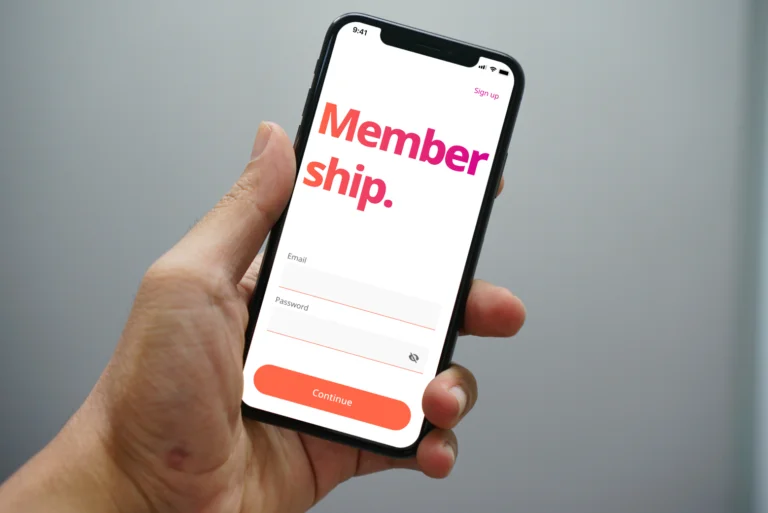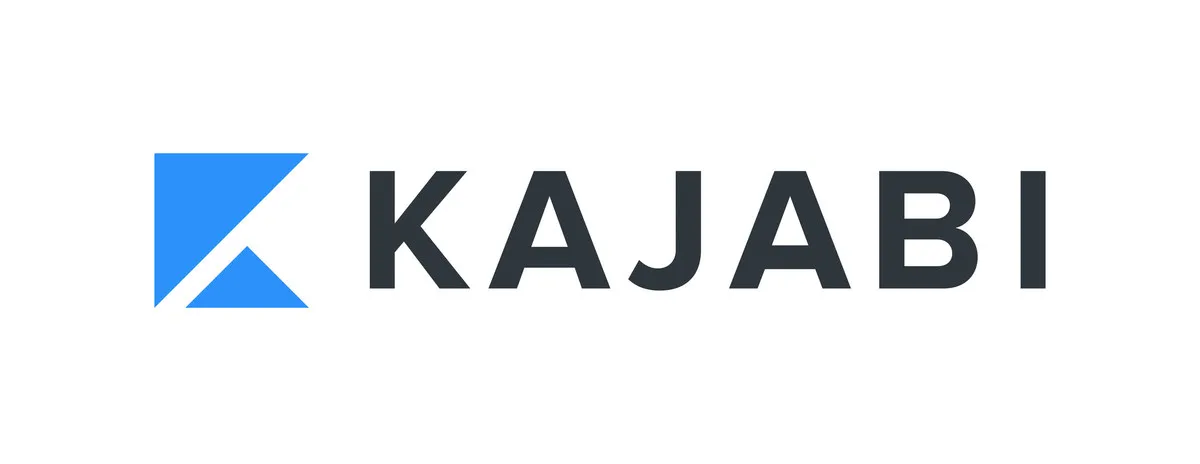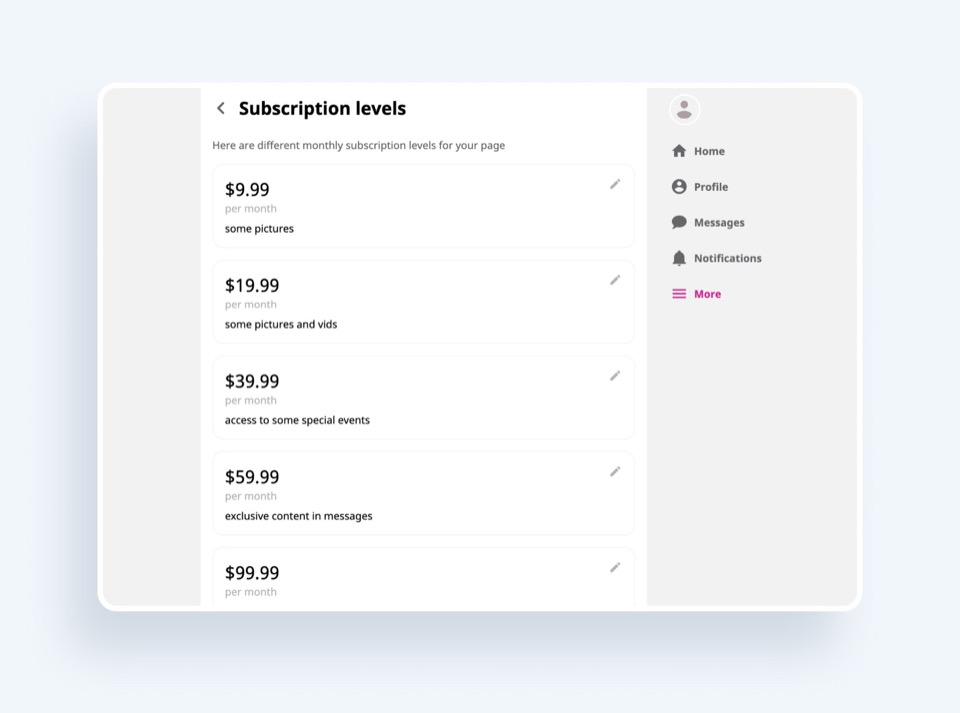How to Start a Membership Site in 2024
Dive into the 2023 blueprint for creating a membership website that members clamor to join. Discover insider strategies on crafting irresistible content, leveraging the most user-friendly platforms, and harnessing the power of exclusivity to keep your community engaged. Ready to turn your expertise into a lucrative, vibrant digital hub? Your journey starts here. Step into a world where your content reigns supreme, and a loyal membership base is not just a dream, but a reality

How to Start a Membership Site: Step-by-step Guide 2023 by Scrile
Introduction: create your own membership website
Building a successful membership site is not just about setting up a website where people can sign up. It’s about creating an online destination that offers unique value, fostering a community that your members will want to join and stay part of. In this comprehensive guide, we delve deep into every aspect you need to know on how to create a membership website, from understanding the membership model to choosing the right membership website builder, and why solutions like Scrile Connect are pivotal for your success.
Understanding Membership Website Business Model

Before you dive into creating your own membership site, it’s crucial to understand what a membership business model entails. This model, adopted by most membership platforms, revolves around providing continuous value to members – be it through premium content, special access to events, or unique members-only content. The goal is to build a community, not just a customer base.
Exclusive Content is King
At the core of any successful membership site is premium content. This could range from in-depth blog posts, online courses, webinars, or ebooks that are not available to non-members. Your content must be compelling enough for members to pay for access, and consistent enough to retain their subscription month after month.
Community Building
Beyond content, a membership business model thrives on community. It’s not just about what members receive, but also about how they interact with one another and with you. Establishing an online community where members can engage, discuss, and share can add immense value to your membership site.
Recurring Revenue
One of the biggest draws of a membership model is its potential for recurring revenue. Members pay a subscription fee, which could be monthly, quarterly, or yearly, providing a steady income stream for you. However, it’s crucial to balance revenue goals with member satisfaction. Ensuring that members feel they’re getting more in value than they’re paying is key to retention.
Benefits of Starting a Paid Membership Website

In the digital era, where online presence is pivotal, initiating a membership website presents a lucrative and sustainable business model. Whether you’re an individual expert, a content creator, or a large-scale enterprise, the benefits of adopting this membership model are manifold. Here’s why venturing into this domain is more than just a trend, but a forward-thinking strategy for growth and community-building:
Scalability with Ease
Membership sites allow your business to scale efficiently. As your subscriber base grows, there won’t be a proportional need for resource augmentation. Your premium content, be it educational, inspirational, or merely entertaining, can serve two or two thousand paying members with minimal extra effort or expense.
Product Bundling Opportunities
With a membership model, you have the unique advantage of bundling memberships with an array of exclusive offerings. From online courses, one-on-one coaching sessions, private group access, to premium content, the opportunities are vast. These bundled packages add immense value to subscriptions, enhancing member acquisition and retention rates.
Time-Efficiency for Entrepreneurs
Running a successful membership website doesn’t demand an around-the-clock commitment. With smart planning, automation tools, and community-driven content, you can maintain a vibrant, active site in just a few hours a week.
Why a Membership Website is an Unmissable Opportunity
The advantages of hosting a membership website extend beyond the site owner to the members themselves. Here’s how:
- Exclusive Resources: Paying members gain exclusive access to high-caliber content, resources, and opportunities, aiding in personal development, skill acquisition, or deepening knowledge in a passion area.
- Convenience at Its Best: The digital nature of membership websites offers unparalleled convenience. Members appreciate the ease of accessing an organized repository of resources, available anytime, anywhere, in stark contrast to location-bound events or workshops.
- A Thriving Supportive Network: Perhaps the most invaluable aspect is the community. Members find a network of supportive peers and mentors, enabling the exchange of ideas, feedback, and lasting relationships that could be transformative.
In conclusion, building a membership website is not just a revenue decision; it’s a commitment to growing a community and sharing value-packed content that can genuinely make a difference. It’s about creating a space where engagement, learning, and business growth coexist and flourish together. Whether you’re just starting out or looking to expand your digital footprint, there’s no denying that membership websites are a powerhouse of potential waiting to be unleashed.
Understanding Different Types of Membership Sites

n the digital marketplace, the concept of a membership site has evolved into several formats, each serving distinct needs and offering unique benefits. Identifying the right membership model is key to tailoring your site’s features and content to your audience’s preferences and expectations. Let’s delve into the common types of membership sites that have gained prominence in the digital space:
Fixed Term Membership Sites:
A fixed-term membership model operates on the premise of time-bound access to content or services. Ideal for structured programs like a six-week training course or a year-long personal development program, this model appeals to individuals seeking targeted learning or experience within a specified period. Here, members pay a one-time fee or opt for periodic payments, acknowledging that their access concludes at the end of the term.
Ongoing Membership Sites:
Contrasting with the fixed-term, the ongoing membership sites offer an open-ended experience. Members subscribe for an uninterrupted access to resources, paying a recurring monthly or annual fee. This model is common in platforms offering extensive libraries of content, tools, or services that members utilize for continual learning or personal enjoyment. However, it’s imperative for site owners to regularly refresh their membership content, ensuring an updated and dynamic repository that justifies the recurring expense and retains subscriber interest.
Community-Based Membership Sites:
Community-based membership sites are less about content and more about connection. They revolve around creating an interactive nexus where members engage, share insights, seek advice, and offer support. The driving force here is the collective energy of like-minded individuals, often materializing through forums, social media groups, or live networking events. This model thrives on active participation and communal contributions, transforming members from mere consumers to engaged community members.
Content-Based Membership Sites:
The content-based model is the cornerstone of most educational platforms, professional development sites, or any domain where content is king. These sites provide a wealth of exclusive, members-only web pages packed with articles, webinars, e-books, online courses, or podcasts. The objective is to deliver value through high-quality content that members find educational, inspirational, or simply entertaining.
Free vs. Paid Membership Structures:
Beyond the operational models, membership sites often grapple with the ‘free membership’ versus ‘paid membership’ dilemma. Free membership sites are accessible to everyone and rely on alternative revenue streams like advertising or sponsorships, whereas paid membership sites necessitate a fee for access. The latter, while establishing a revenue stream, reinforces the perceived value of the content or community experience being offered.
The Advent of Hybrid Models:
Notably, the digital age has seen a rise in hybrid models that blend various elements tailored to audience needs and business objectives. For instance, an online membership site might combine ongoing content access with a vibrant community forum, or offer a base free membership tier with premium, paid-only resources.
In conclusion, there’s no one-size-fits-all approach to membership websites. The best model aligns with your audience’s desires, your content or service type, and your long-term business vision. Whether through premium content, a thriving community, or a mix, your membership site is an avenue to provide value, foster engagement, and, crucially, build a sustainable digital business.
Planning Your Membership Site
Like any business endeavor, the creation of a membership website starts with thorough planning. This involves several stages, from identifying your target audience to deciding the type of content you’ll offer, and determining the right pricing strategy.
Know Your Audience
Understanding your target audience is fundamental. These are the individuals you’re creating your site for, whose interests and needs will drive your content strategy. Conduct market research, identify gaps in the market, and position your membership site to fill these gaps.
Decide on the Type of Content
Once you know your audience, decide on the type of content you’ll provide. Will you offer online courses, conduct live webinars, provide one-on-one coaching, or a mix? The content should not only appeal to your target audience but also set you apart from competitors.
Set Membership Levels
Creating multiple membership levels can cater to the different needs and budgets of your audience. For instance, a basic membership site might offer access to blog posts and a community forum, while a premium level might include online courses, one-on-one consultations, and more. This strategy can also encourage upgrades as members seek more value.
Determine Pricing
Pricing your membership can be challenging. It needs to reflect the value you’re providing, be affordable for your target audience, and also support your business financially. Analyze competitor pricing, consider your operating costs, and understand your audience’s purchasing power.
Essential Features of a Membership Website

Building the best membership website requires a keen understanding of the features that elevate the user experience and streamline administrative tasks. Here’s a breakdown of the critical components any robust membership platform should possess:
Membership Management
A central feature of any membership website is the ability to create multiple membership levels, each potentially offering different tiers of access to exclusive content or benefits. This feature should allow the site owner to easily manage user subscriptions, track active memberships, and set up unique membership offerings, all from one place.
User Registration and Member Profiles
To foster a sense of community and ownership, your website must provide an intuitive front-end user registration system. New members should find it easy to sign up, create profiles, and navigate to their members’ area. Profiles enhance the community feel, enabling members to interact and share.
Content Restriction
The ability to create members-only content is paramount. This feature restricts general audience access, ensuring that only paying or registered members get access to the premium content you’ve curated or created. It’s the ‘behind closed doors’ allure that makes your site desirable to potential subscribers.
Payment Options
Implementing a seamless financial transaction process is essential. Your membership setup should support various payment options like credit cards, PayPal, Google Pay, among others, facilitating ease of purchase for paid memberships globally.
Diverse Content Offerings
Your membership content should be varied and rich, catering to the different preferences of your target audience. This can range from articles, videos, and ebooks to online courses, events, and more. Exclusive sales, discounts, products, or even a points and rewards system can add tangible value to a membership.
Admin Dashboard
Behind every successful membership website is a comprehensive admin dashboard. This should provide real-time stats, allowing you to monitor user engagement, track revenue, manage payouts, and oversee user management tasks efficiently. Insightful analytics can help you tweak your strategies, ensuring your site stays engaging and profitable.
Types of Content Files
Knowing your audience is key to delivering content that resonates. Whether it’s informative articles, instructional videos, comprehensive courses, or interactive events, the types of content you offer should align with your members’ interests and needs. Offering a diverse content portfolio can be the deciding factor for prospects to choose your platform for their growth and engagement.
Choosing the Right Platform for Your Membership Website

One of the most critical decisions you’ll make is choosing the right membership website builder or platform. The platform you select should not only be robust, offering the functionalities you require but also flexible, allowing your site to grow with your business.
WordPress Membership Sites
WordPress, a versatile and widely-used platform, allows for the addition of membership functionalities through various membership plugins. With a WordPress membership plugin, you can turn a standard website into a full-fledged membership site, controlling access to content based on membership levels, and more. However, it requires a level of technical know-how and ongoing maintenance.
Dedicated Membership Website Builders
Dedicated membership website builders are platforms specifically for creating membership platforms. These builders provide features essential for running a membership site, such as content restriction, member management, payment processing, and more, all integrated into one platform. They’re often more user-friendly, but customization options might be limited compared to WordPress.
Building a membership site is no small feat; it requires a platform capable of handling various functionalities, from managing members-only content to fostering a community. Dedicated membership website builders simplify this process, providing the tools necessary to create a membership site that not only attracts but also sustains a thriving member base. Let’s delve into some of the best membership website platforms that have been instrumental for entrepreneurs and content creators in launching successful membership sites.
Kajabi

When you create a membership website, you’re looking for an all-encompassing solution, and Kajabi provides just that. Known for its powerful content marketing features, Kajabi understands that a membership site thrives on premium content. With its seamless content management system, you can effortlessly roll out members-only content, while its integrated email marketing and automation tools keep members engaged and informed.
MemberSpace

If you’re looking to convert part of your existing website into a secure members-only area, MemberSpace is your go-to. It allows content creators to maintain their original site design, offering a seamless experience for members. Integration with social media platforms is a breeze, enhancing your ability to build an active online community around your brand and content.
Podia

Podia stands out in the realm of user-friendly membership website builders. It’s not just about enabling creators to launch a membership site; it’s about providing a platform where engagement with paying members feels organic and effortless. Podia excels with its messaging features, creating a sense of community and connectedness among members.
Teachable

For those venturing into the educational side of content, Teachable is a prime choice. It’s not only about hosting courses; it’s about building an interactive learning community. The platform’s emphasis on engagement is evident through features like quizzes, forums, and course completion certificates, which enrich the members’ learning journey.
Thinkific

Launching a membership site with Thinkific means you’re in for scalability. From small-scale setups to extensive enterprise solutions, Thinkific accommodates all. Their free trial option is a standout, allowing prospective members to experience the value firsthand before committing. This approach can significantly boost membership conversions.
Wild Apricot

Wild Apricot is a favorite among non-profits and small associations, streamlining everything from member applications to renewals. Its event management features are robust, perfect for organizations that prioritize real-life interactions alongside their online community.
MemberPress

Operating within the WordPress ecosystem, MemberPress transforms your existing site into a fully functional membership platform. Its prowess lies in content restriction capabilities and custom access rules, essential for any site offering exclusive content. Plus, with its powerful community features, members can interact and contribute, further enriching the membership experience.
Mighty Networks

Mighty Networks empowers creators and entrepreneurs to build a flourishing online community and membership site all under their own brand. This platform is not just about hosting members-only content; it’s about bringing people together who share common interests or goals. With Mighty Networks, you can create a membership website that offers online courses, organizes events, and fosters direct engagement among members, boosting the sense of an interconnected community. Its unique algorithm helps members discover content and connections that matter most, thereby enhancing the user experience and engagement.
Patreon

Patreon has revolutionized the way creators interact with their most loyal supporters. As a membership model pioneer, Patreon allows creators to offer a variety of membership levels to their patrons, providing premium content, personal interactions, and behind-the-scenes access as rewards. Creators can share updates via text, images, or video, and can also host live sessions, creating an intimate online community that’s engaging and dynamic. Patreon not only helps creators generate recurring revenue but also provides them with the freedom to experiment with their content, knowing they have the financial support of their members. It’s a platform that celebrates creativity and communal support, making it a top choice for artists, writers, musicians, and other creative professionals.
Turnkey Membership Software: Scrile Connect

For entrepreneurs seeking a comprehensive, customizable, and user-friendly solution, Scrile Connect stands out. It’s a turnkey SaaS solution designed for rapid deployment of content monetization websites, mirroring the business models of successful membership platforms like Patreon and OnlyFans. Notably, Scrile Connect allows for selling content and subscriptions/memberships, providing a solid foundation for your membership program.

Why Choose Scrile Connect?
With Scrile Connect, you gain a swift market entry advantage, thanks to its array of built-in tools. The platform offers features like subscriptions/memberships, a feed with paid posts, paid messaging, pay-per-minute calls, and live streams, all of which can be customized and scaled to suit evolving business needs. Plus, the built-in billing system simplifies financial transactions, making it easier to manage your revenue.
Scalability and Customization
Scrile’s solutions are not one-size-fits-all. They understand that businesses have unique needs and goals. Their platform ensures scalability, reliability, and efficiency, essential for any growing membership site. You can start with their ready-made solutions and customize them to your specific needs, ensuring your site can handle increased traffic and more content as your community grows.
Building Your Membership Website: 4 Easy Steps

Embarking on the journey of creating a membership website can seem daunting, but by breaking it down into manageable steps, you’ll find it’s a highly rewarding endeavor. Here’s a more detailed guide to help you navigate through the process seamlessly:
Step 1: Technical Setup – Starting Right
The very first thing you need to do is handle the technical setup. It begins with securing a domain name that reflects your brand or the content you’ll be offering. This domain will be the primary address your prospective members will use to find you, so choose the right one. Next, you need to create a hosting account, which is where your website’s data will be stored. It’s crucial to select a reliable hosting provider to ensure optimal site performance and minimal downtime.
Make sure to install an SSL certificate for your website. SSL (Secure Sockets Layer) is a security protocol that provides a secure channel between two machines operating over the internet or an internal network. In today’s digital age, savvy internet users often do not trust websites without an SSL certificate, which also provides security for online transactions. This step is crucial for protecting your members’ data and securing payment details, giving your audience the confidence to proceed with their subscriptions.
Step 2: Design and User Experience – Crafting a Compelling Journey
Once the technical aspects are sorted, the next step is to design your website. The design is not just about aesthetics; it’s about creating an intuitive, user-friendly experience that resonates with your target audience. Ensure your website reflects your brand identity through its color scheme, typography, and imagery. The layout should be navigable, encouraging visitors to explore, learn more, and eventually sign up.
Place emphasis on creating an effective and clear call-to-action (CTA). Whether it’s a “Sign Up,” “Join Now,” or “Get Started” button, make sure it’s visible and compelling. Your goal is to convert visitors into paying users, and a strong CTA can significantly boost conversions.
Step 3: Membership Management – Organizing for Growth
The core of your membership website is the management system. You need to create different membership levels or tiers, possibly offering various perks, content access, and pricing for each. With platforms like Scrile Connect, you can easily set up your membership tiers, add new ones as your site grows, and manage subscriptions and renewals. Make sure your content is gated, meaning only paying users can get access. This exclusivity is what will drive your sign-ups, after all.

Step 4: Payment Gateways and Pricing Strategies – Securing Your Revenue
Finally, you’ll set up your payment gateways and decide on your pricing. Choose a system that integrates seamlessly with your website and can handle recurring payments if you’re offering subscriptions. With Scrile Connect, you get a built-in billing system, eliminating the hassle of third-party integrations. For pricing, consider what your competitors are charging and the value you’re providing. Your strategy might involve a trial period, discounted rates for annual subscriptions, or different pricing tiers corresponding to different levels of access or services.
By carefully strategizing each of these steps, you’ll create a membership site that not only attracts members but also encourages them to stay. Remember, the key to a successful membership platform is continuous value addition. Always be on the lookout for opportunities to improve and add new, valuable content that keeps your members engaged and loyal.
Content Strategy: Creating Valuable Experiences
Creating a thriving membership site goes beyond the technical setup; it’s about providing continuous value that members are happy to pay for. Your content strategy should be at the heart of everything you do, as it’s the primary reason people will want to join and stay on your platform.
Exclusive Content: The Heart of Your Site
Premium content is the cornerstone of any successful membership site. Members pay to get access to something unique, valuable, and relevant that they can’t just find anywhere else online. This might be in-depth tutorials, extensive e-books, exclusive webinars, or even one-on-one coaching sessions. Ask yourself what your audience needs or what problems they face that you can solve.
The content you offer needs to be compelling enough to persuade your visitors that your site is worth investing in. Analyzing successful membership website examples can provide insights into creating content that resonates with your target audience.
Members-Only Content: Foster Community
A sense of community is often what members value the most. They want to feel part of something, to have a space where they can interact with others who share the same interests or goals. This is why creating members-only content is such a great way to foster a community.
Consider implementing forums, discussion boards, or live chat rooms. User-generated content is another powerful tool; it’s not just about what you provide to the members, but what members share with each other. Platforms like Scrile Connect excel by offering features such as paid messaging and live streams, which facilitate these interactions and make your platform a dynamic space for exchange and growth.
Regular Updates: Keep Them Engaged
If you want to create a membership site that maintains a high retention rate, regular updates are non-negotiable. Members need to see that you’re active, involved, and dedicated to providing ongoing value. That doesn’t mean you need to produce new content daily, but you do need a consistent schedule. This could be anything from weekly blog posts to monthly webinars or podcasts. Providing a content calendar is also a great way to let members know what’s coming up, giving them something to look forward to. Remember, the goal is to reinforce the value of their subscription continuously.
In conclusion, running a membership site is about building a community around valuable, premium content. You need to provide everything your members need, keep them engaged, and give them reasons to stay. It’s a rewarding endeavor that, when executed correctly, can transform a platform into a vibrant, self-sustaining community.
Marketing Your Membership Website

Even the best sites with the most valuable content need marketing to grow their member base.
Social Media: Leverage Your Channels
Use social media platforms to your advantage. Regularly post engaging content that highlights the benefits of your membership site, and consider investing in social media advertising to reach a broader audience. Platforms like Facebook, Instagram, and LinkedIn can be particularly beneficial depending on your target audience.
SEO Best Practices: Improve Visibility
Optimize all your content for search engines. This involves incorporating relevant keywords, such as “best membership website,” “exclusive content,” and others, to improve your site’s visibility in search results. Remember, most membership sites gain traffic through organic search, making SEO a crucial component of your strategy.
Free Trials: A Taste of Membership
Offering a free trial can be a great way to attract new members. Giving potential members a glimpse of the premium content and community you’ve built can convince them of its value. Ensure the sign-up process is seamless, and consider automating email reminders towards the end of their trial period to remind them to subscribe.
Maintaining and Growing Your Membership Site

The work doesn’t end once your site is live and gaining members. Ongoing maintenance and continual improvement are necessary for sustained growth.
Collect Feedback: Understand Your Members
Regularly gather feedback from your members. What do they enjoy? What needs improvement? Understanding their experiences will help you make informed decisions about future content and features.
Analyze Performance: Use Data Wisely
Use analytical tools like Google Analytics to track your site’s performance. Which pages are most popular? Where are users spending most of their time? This data is invaluable for understanding member behavior and optimizing their experience.
Encourage Referrals: Expand Your Reach
Implement a referral program to incentivize your current members to bring in new ones. This not only increases your member base but also fosters a sense of community and ownership among current members.
Conclusion: Your Journey to a Thriving Membership Website
Building a successful membership platform is no small feat. It involves numerous steps, from the technical setup, crafting valuable content, to effective marketing, and constant optimization. However, with the right tools and strategies, it’s well within reach.
If you’re looking for a robust, customizable solution to kickstart your membership site, consider Scrile Connect. Its comprehensive features, scalability, and user-friendly interface make it an excellent option for both beginners and seasoned entrepreneurs.
Remember, the key to a thriving membership website lies in providing consistent value, fostering an engaged community, and remaining adaptable to the needs of your members. Start building your platform today, and create an online space that not only generates revenue but also brings people together over shared interests and valuable content.
However, for those looking for a dedicated membership website builder that offers an easy-to-use, drag-and-drop website interface, and a host of features designed for membership sites, considering a pre-built solution like Scrile Connect can be a game-changer.

If you found our guide on creating a successful membership website enlightening, we have more insightful resources for you. Dive deeper into the world of membership sites and online communities with these comprehensive guides:
- How to Start a Membership Site: Essentials Explained – From the initial concept to the final launch, every step is meticulously detailed to ensure you have a strong foundation for success.
- How to Start Your Own Fan Club Today – Learn how to create an exclusive fan club that fosters community, exclusivity, and engagement, giving your followers a unique space to interact and contribute.
- How to Start an OnlyFans Agency – Amplify your earning potential by managing multiple content creators with an OnlyFans agency. This article provides you with detailed insights on setting up, managing, and scaling your agency, ensuring sustainable growth and profitability.
FAQ
How do you create a membership website?
To create a membership website, you need to:
- Define Your Offerings: Decide on the exclusive content or services you’ll provide.
- Select a Platform: Choose a membership software or website builder designed for creating membership platforms.
- Design Your Site: Set up your website’s structure, including pages for signing up, member profiles, and content access.
- Implement Membership Features: Use your platform’s tools to manage member sign-ups, secure content, and handle subscriptions.
- Launch and Promote: Once your site is ready and tested, launch it and use marketing strategies to attract members.
What’s the difference between subscription website and membership website?
While often used interchangeably, there’s a subtle difference between a subscription and a membership website. A subscription website involves paying for access to a product or service, often content, on a recurring basis.
However, a membership website usually refers to a site where members join a community, not just for content but also for networking, exclusivity, or to be part of a group with shared interests. Essentially, membership platforms often foster more interaction and community-building features compared to the typically content-focused subscription sites.
Do membership sites make money?
Yes, membership platforms have the potential to be a lucrative venture if implemented correctly. A paid membership site generates income primarily through member subscriptions. Members pay recurring fees, often monthly or annually, for access to exclusive content, special offers, or the privilege of being part of a community.
This revenue model provides a steady, predictable income stream, which is one of its most attractive aspects. However, the profitability of a membership site depends on various factors, including the quality and exclusivity of the content or services provided, the strength of the community or network you build, effective marketing strategies, and the ongoing value delivered to members to encourage subscription renewals.
Can I use Scrile Connect for creating a membership website?
Yes, Scrile Connect is perfect for launching a membership website quickly and efficiently. It’s a turnkey SaaS solution, mirroring platforms like Patreon and OnlyFans, designed for fast content monetization and direct audience monetization. It boasts key features such as subscriptions, paid posts, live streams, and an integrated billing system. Plus, it’s highly customizable and scalable, with a focus on rapid deployment and adaptability. Scrile’s approach offers a low initial investment, quick market entry, and a reliable, scalable system, making it an excellent choice for your membership site needs.
Read also
How Do I Start My Own Adult Webcam Business?
Learn the steps to start your own adult webcam business, from setting up your website and recruiting models to marketing and monetization strategies.
Webcam Business with Scrile Stream: Key Features
Discover how to use Scrile Stream to run a successful webcam business, including its key features and benefits for streamers and viewers.
Webcam Business Plan: Essential Components
Explore the essential components of a webcam business plan, from market research and financial planning to marketing strategies and operations.
How to Create a Streaming Website: Step-by-Step Guide
Learn how to create a streaming website with this step-by-step guide, covering everything from technical setup to content creation and user engagement.
How to Build a Crowdfunding Platform: A Comprehensive Guide
Discover the steps to build a crowdfunding platform, including design, development, marketing, and managing campaigns.
